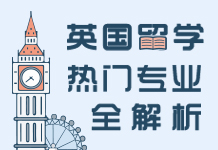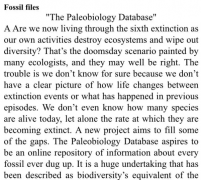青岛朗阁:2016年3月5日雅思阅读考试真题回顾及解析
来源:青岛朗阁
浏览:
发布日期:2016-03-07 14:34
摘要:2016年3月5日的雅思阅读考试已经结束了,大家发挥得怎么样那?青岛朗阁小编第一时间为大家带来了2016年3月5日的雅思阅读考试真题回顾及解析,希望对雅思考生们有所帮助~
2016年3月5日的雅思阅读考试已经结束了,大家发挥得怎么样那?青岛朗阁小编第一时间为大家带来了2016年3月5日的雅思阅读考试真题回顾及解析,希望对雅思考生们有所帮助~
青岛朗阁雅思阅读教师 李佩玟
| 考试日期: | 2016年3月5日 |
| Reading Passage 1 | |
| Title: | 消费者广告 |
| Question types: | 判断7+简答6 |
| 文章大意回顾 | 过度的广告会造成消费者对广告无感,有时还会有副作用。 |
| 题型难度分析 | 本文组合了判断题和简答题,都是细节题,顺序作答,应注意相应信息的定位,难度较低。 |
| 题型技巧分析 |
判断题作为雅思阅读的主流题型,一直是让考生较为困惑的一种题型,这种困惑往往来自于中西方文化在思维模式上的差异。西方文化较为侧重证据性,追求思维上的细节对应,因此考生在做题中应逐渐适应这种逻辑方式。可参考以下判断原则: True: 1. 同义改写 2. 归纳总结 False: 1. 直接相反 2. 原文是多个项目并列但题目是“必须”或者“只有”3. 缺少条件成分 Not given: 1. 内容在原文中无提及 2. 题目范围小于原文范围 3. 比较关系不成立 *判断题应特别注意书写答案的规范性:注意看是YES/NO/NOT GIVEN 还是TRUE/FALSE/NOT GIVEN, 书写时要大写全拼。 简答题(Short answer)题型要求根据文章回答相应问题,通常以what、which、when、where、who、why、how等提问,往往顺序出题,与填空题做题思路相近。 解题步骤:1. 仔细看题目要求,如no more than two/three words 2. 确定问句种类并仔细理解问题:一般疑问句yes/no回答,选择疑问句或者wh/how问句具体回答 3. 关注问句中关键词key words,尤其是表示时间、地点、数量的词。4.对应关键词和文章内容,判断是否与原文含义一致,按要求找词回答问题。 |
| 剑桥雅思推荐原文练习 | 判断+简答: C9T1P1 |
| Reading Passage 2 | |
| Title: | 儿童机器人 |
| 文章大意回顾 | 本文主要讲到把机器人放到学校可以辅助老师教学并且可以陪学生玩。让机器人拥有表情促进交流,但是过度使用可能引起伦理问题。 |
| Question types: | List of headings 5+人名理论匹配5+填空题3 |
| 参考答案 |
14-18 LOH: DFBAC 19-23 人名理论配对:BCADA 24-26 填空题: 24. human 25. a peer 26. affection |
| 题型难度分析 | 本篇文章题型难度相对较大,其中段落小标题题型需要考生注意把握段落主旨,而人名理论匹配需要在全文划出人名做出标记,再对应观点做题。 |
| 题型技巧分析 |
List of headings(小标题配对题)是雅思阅读中难度较高的一种题型,要求给段落找小标题, 也就是总结段落的主旨内容,对理解文章的结构要求高。这种题型具有独特的结构特征,即它一般出现文章之前,由两部分组成:一部分是选项,另一部分是段落编号,要求给各个段落找到与它对应的选项。 解题步骤: 1. 确定文章主题,划掉举例的选项以及段落 2. 分析选项,划词关键词 3. 回到原文,确定段落主题:抓住各段主题句以及核心词,关注段落首句次句末句以及段落中间特殊词之后的内容(如转折词、举例词等) 4. 对比选项解题 |
| 剑桥雅思推荐原文练习 | 科技题材:C5T3P3/C10T3P3 |
| Reading Passage 3 | |
| Title: | Mystery in Easter Island |
| Question types: | List of headings 4+ 判断5+Summary5 |
| 参考题目 |
List of Headings: i The famous moai ii The status represented symbols of combined purposes iii The ancient spots which indicates scientific iv The story of the name v Early immigrants, rise and prosperity vi The geology of Easter Island vii The begin of Thor Heyerdahl’s discover viii The countering explanation the misconceptions politically manipulated ix Symbols of authority and power x the Navel of the World xi The Norwegian Invaders’ legacy 27-30: 27. Paragraph B 28. Paragraph C 29. Paragraph D 30. Paragraph E 判断: 31. The first inhabitants of Easter Island are Polynesian, from the Marquesas or Society islands. 32. Construction of some moai statues on the island was not finished. 33.The Moai can be found not only on Easter Island but also elsewhere in Polynesia. 34.Most archeologists recognized the religious and astronomical functions for an ancient society 35. The structures on Easter Island work as an astronomical outpost for extraterrestrial visitors. 36. The theory that depleted natural resources leading to the fail of Easter Island actual has a distorted perspective. 37-40 Summary: Many theories speculated that Easter Island’s fall around the era of the initial European contact. Some say the resources are depleted by a 37______ .The erroneous theories began with a root of the38______ advanced by some scholars. Early writers did not have adequate 39______ understandings to comprehend the true nature of events on the island. The social devastation was in fact a direct result of 40______ of the first European settler |
| 题型技巧分析 |
Summary题型要特别注意阅读题目要求(instructions), 本题是从原文章中找答案填空,基本以填写原词为主。 解题技巧: 1. 确定定位词; 2. 分析空格:分析空格词的词性,空格前后的词句,以实现进一步的限定; 3. 注意关系词(连接词):并列关系、比较关系、因果关系等;注意空格前后词的同义替换词。 |
| 相似英文原文阅读 |
A One of the world’s most famous yet least visited archaeological sites, Easter Island is a small hilly, now treeless island of volcanic origin. Located in the Pacific Ocean at 27 degrees south of the equator and some 2200 miles (3600 kilometers) off the coast of Chile, it is considered to be the world’s most remote inhabited island. The island is, technically speaking, a single massive volcano rising over ten thousand feet from the Pacific Ocean floor. The island received its most well-known current name, Easter Island, from the Dutch sea captain Jacob Roggeveen who became the first European to visit Easter Sunday, April 5, 1722. B In the early 1950s, the Norwegian explorer Thor Heyerdahl popularized the idea that the island had been originally settled by advanced societies of Indians from the coast of South America. Extensive archaeological, ethnographic and linguistic research has conclusively shown this hypothesis to be inaccurate. It is now recognized that the original inhabitants of Easter Island are of Polynesian stock (DNA extracts from skeletons have confirmed this, that they most probably came from the Marquesas or Society islands, and that they arrived as early as 318 AD (carbon dating of reeds from a grave confirms this). At the time of their arrival, much of the island was forested, was teeming with land birds, and was perhaps the most productive breeding site for seabirds in the Polynesia region. Because of the plentiful bird, fish and plant food sources, the human population grew and gave rise to a rich religious and artistic culture. C That culture’s most famous features are its enormous stone statues called moai, at least 288 of which once stood upon massive stone platforms called ahu. There are some 250 of these ahu platforms spaced approximately one half mile apart and creating an almost unbroken line around the perimeter of the island. Another 600 moai statues, in various stages of completion, are scattered around the island, either in quarries or along ancient roads between the quarries and the coastal areas where the statues were most often erected. Nearly all the moai are carved from the tough stone of the Rano Raraku volcano. The average statue is 14 feet and 6 inches tall and weighs 14 tons. Some moai were as large as 33 feet and weighed more than 80 tons. Depending upon the size of the statues, it has been estimated that between 50 and 150 people were needed to drag them across the countryside on sleds and rollers made from the island’s trees. D Scholars are unable to definitively explain the function and use of the moai statues. It is assumed that their carving and erection derived from an idea rooted in similar practices found elsewhere in Polynesia but which evolved in a unique way on Easter Island. Archaeological and iconographic analysis indicates that the statue cult was based on an ideology of male, lineage-based authority incorporating anthropomorphic symbolism. The statues were thus symbols of authority and power, both religious and political. But they were not only symbols. To the people who erected and used them, they were actual repositories of sacred spirit. Carved stone and wooden objects in ancient Polynesian religions, when properly fashioned and ritually prepared, were believed to be charged by a magical spiritual essence called mana. The ahu platforms of Easter Island were the sanctuaries of the people, and the moai statues were the ritually charged sacred objects of those sanctuaries. E Besides its more well-known name, Easter Island is also known as Te-Pito-O-Te-Henua, meaning "The Navel of the World’, and as Mata-Ki-Te-Rani, meaning ‘ Eyes Looking at Heaven’. These ancient name and a host of mythological details ignored by mainstream archaeologists, point to the possibility that the remote island may once have been a geodetic marker and the site of an astronomical observatory of a long forgotten civilization. In his book, Heaven’s Mirror, Graham Hancock suggests that Easter Island may once have been a significant scientific outpost of this antediluvian civilization and that its location had extreme importance in a planet-spanning, mathematically precise grid of sacred sites. Two other alternative scholars, Christopher Knight and Robert Lomas, have extensively studied the location and possible function of these geodetic markers. In their fascinating book, Uriel’s Machine, they suggest that one purpose of the geodetic markers was as part of global network of sophisticated astronomical observatories dedicated to predicting and preparing for future commentary impacts and crystal displacement cataclysms. F In the latter years of the 20th century and the first years of the 21st century various writers and scientists have advanced theories regarding the rapid decline of Easter Island’s magnificent civilization around the time of the first European contact. Principal among these theories, and now shown to be inaccurate, is that postulated by Jared Diamond in his book Collapse: How Societies Choose to Fail or Survive. Basically these theories state that a few centimes after Easter Island’s initial colonization the resource needs of the growing population had begun to outpace the island’s capacity to renew itself ecologically. By the 1400s the forests had been entirely cut, the rich ground cover had eroded away, the springs had dried up, and the vast flocks of birds coming to roost on the island had disappeared. With no logs to build canoes for offshore fishing, with depleted bird and wildlife food sources, and with declining crop yields because of the erosion of good soil, the nutritional intake of the people plummeted. First famine, then cannibalism,set in. Because the island could no longer feed the chiefs, bureaucrats and priests who kept the complex society the resulting chaos triggered a social and cultural collapse. By 1700 the population dropped to between one-quarter and one-tenth of its former number,and many of the statues were toppled during supposed "clan of the 1600 and 1700s. |
| 剑桥雅思推荐原文练习 | C6T3P2/C4T4P3 |
| 考试趋势分析和备考指导: |
|
本次考试的文章是两旧一新,话题分别涉及广告,科技和文化题材,属于雅思中常出现的话题类型。从题型方面看,总体比较稳定:考试在保持了一定数量传统主流题型(判断题)的基础上,出现了难度较大的段落小标题题型和人名匹配题,推荐考生对此类题型多加练习并总结做题经验。Summary题型也有出现,考生应注意仔细阅读题目要求,看清楚是对文章哪一部分的总结概括。本次考试出现的题型对考生的英语功底考察全面,对英语综合实力要求高,所以建议考生全方位地提高语言实力应考,从词汇和句法上把基本功打牢。 本场考试总体难度适中,结合2016年考试情况来看,阅读考试难度有增大的趋势,建议大家在熟练掌握传统特色题型---判断题和填空题的基础上,重点准备匹配题。题材方面,考生除了关注常规的社科历史类文章话题外,应多加关注比例逐渐上升的科技类人类学话题文章,进行相关话题词汇的积累,多进行泛读练习。词汇量和阅读量是决定阅读分数关键的两个因素,再配合对题型的熟悉和适当的技巧,才能在考试中无往而不胜。 |

扫二维码,添加朗阁咨询老师,备注“官网”
免费领取雅思、托福备考计划、精选资料,最新口语新题考点资料
25
2022-06
-
2020年1月16日雅思听力考试真题
2020年1月16日雅思考试已经结束,正在备考雅思的小伙伴,你们想要知道这次考试的听力部分都...
25
2022-06
-
2020年1月16日雅思阅读考试真题
正在进行雅思备考的小伙伴,你们想知道2020年1月16日雅思考试的考试内容吗?今天为了帮助大家...
25
2022-06
-
2020年1月16日雅思写作考试真题
今天为了帮助正在进行雅思备考的小伙伴更好的准备雅思考试,青岛朗阁雅思写作名师 费晓静...
25
2022-06
-
2020年1月16日雅思口语考试真题
今天青岛朗阁雅思口语名师张开翼为大家整理了2020年1月16日雅思口语考题总结,分析了雅思口...
04
2020-12
-
2020年11月14日朗阁雅思听力考题回顾
今天,要和大家分享的是2020年11月14日朗阁雅思听力考题回顾,希望这篇文章能够对大家的学习...
04
2020-12
-
2020年11月14日朗阁雅思阅读考题回顾
今天,要和大家分享的是2020年11月14日朗阁雅思阅读考题回顾,希望这篇文章能够对大家的学习...
热门课程
大家都在看
阅读(2095)
阅读(1965)
阅读(1942)
阅读(1323)
阅读(1093)
阅读(831)







